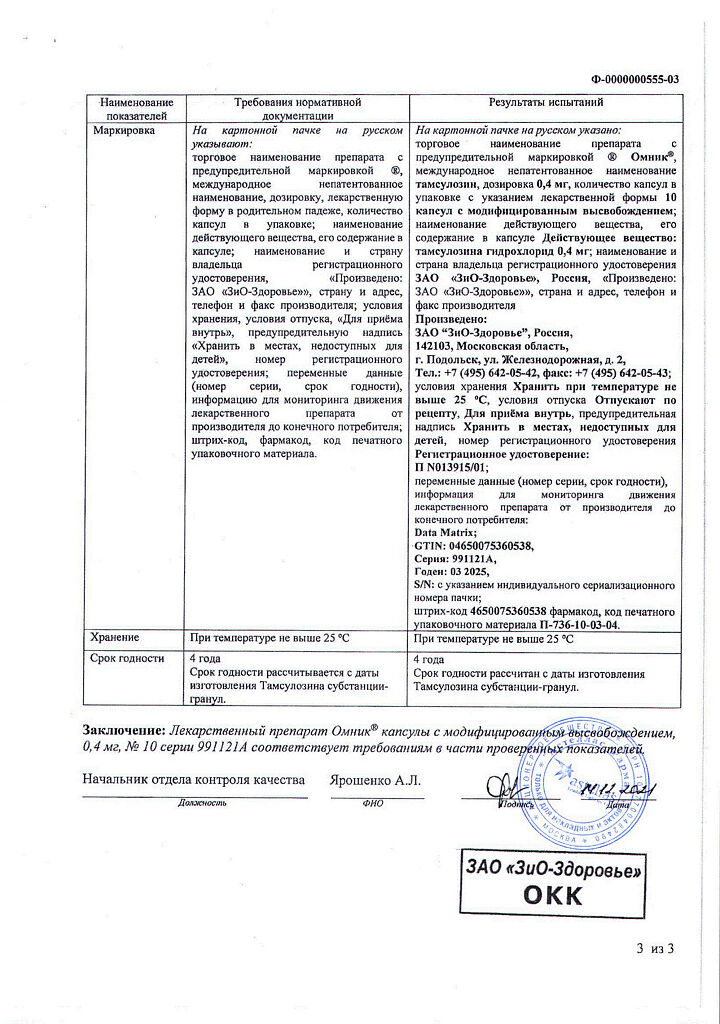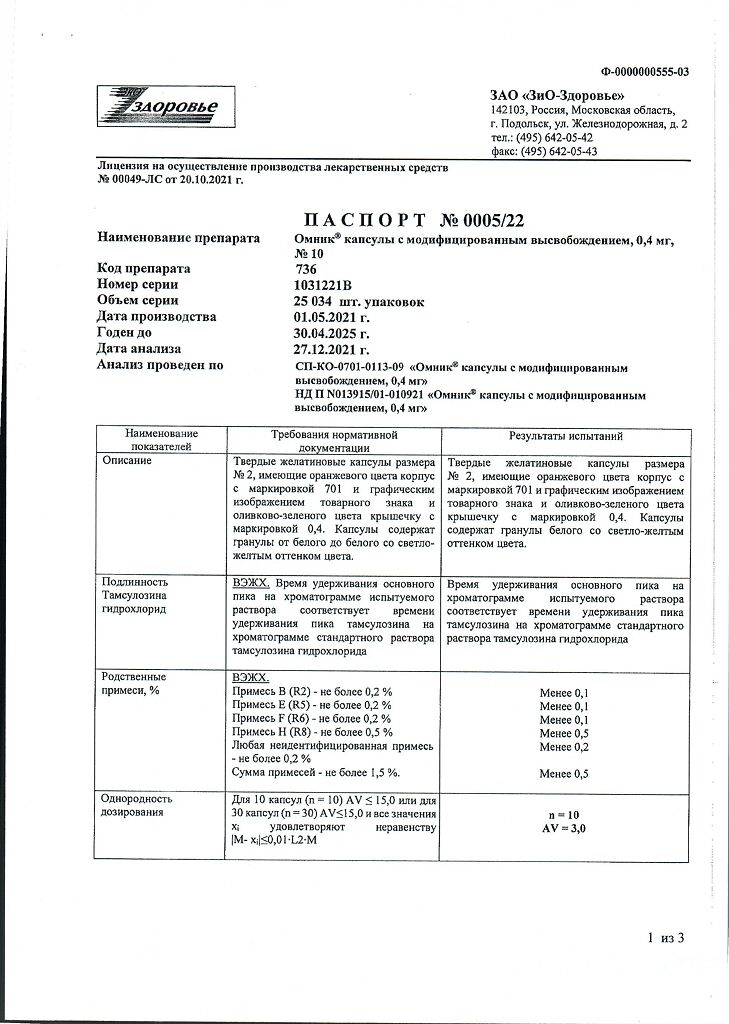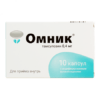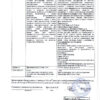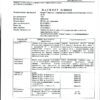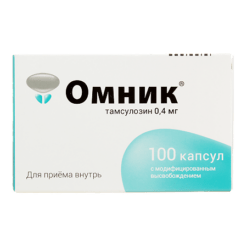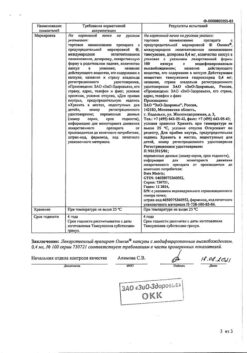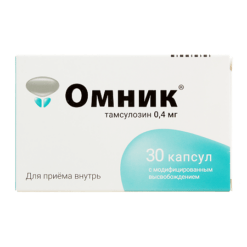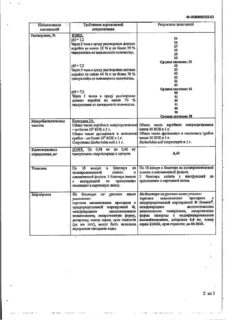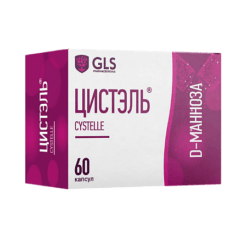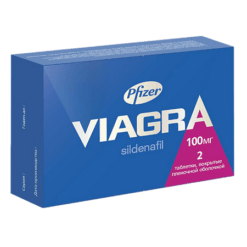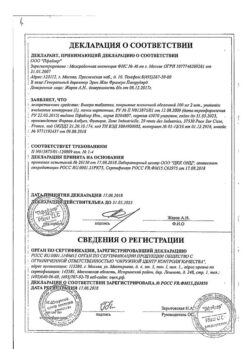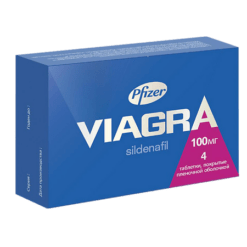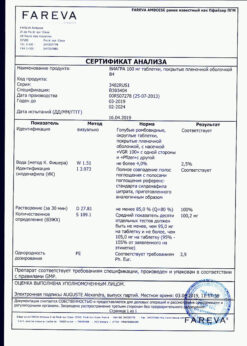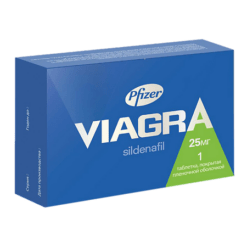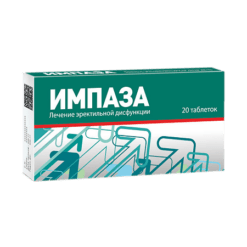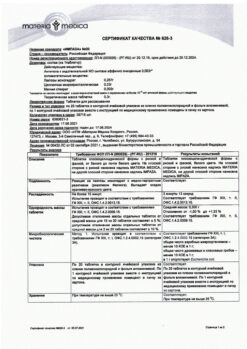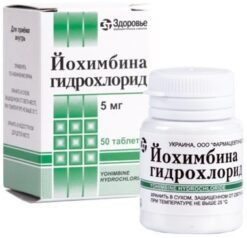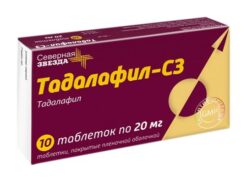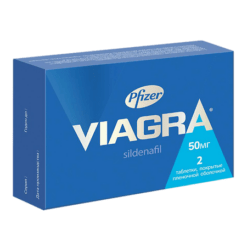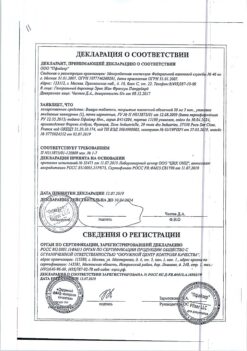No products in the cart.
Omnic, 0.4 mg 10 pcs
€10.50 €9.19
Description
The Omnic is an alpha-adrenolytic.
Pharmacodynamics
Blockade of α1-adrenoreceptors by tamsulosin results in reduction of the tone of the smooth muscles of the prostate, bladder neck and prostatic part of the urethra and improvement of outflow of urine. Simultaneously both symptoms of emptying and symptoms of filling caused by increased tone of smooth muscles and detrusor hyperactivity in benign prostatic hyperplasia are reduced.
The ability of tamsulosin to affect α1A-subtype adrenoreceptors is 20 times greater than its ability to interact with α1B-subtype adrenoreceptors located in vascular smooth muscle. Due to its high selectivity, tamsulosin does not cause clinically significant reduction of systemic BP both in patients with arterial hypertension and in patients with normal baseline BP.
Pharmacokinetics
Absorption
Tamsulosin is well absorbed in the intestine and has almost 100% bioavailability. Absorption of tamsulosin slows down slightly after meals. The same level of absorption can be achieved if the patient takes the drug after the usual breakfast each time. Tamsulosin is characterized by linear kinetics. After a single oral dose of 0.4 mg of the drug, its Cmax in plasma is reached after 6 h. After multiple oral doses of 0.4 mg per day, the equilibrium concentration is reached by day 5, with a value of about 2/3 that after a single dose.
Distribution
The binding to plasma proteins is 99%; the volume of distribution is small (about 0.2 L/kg).
Metabolism
Tamsulosin is slowly metabolized in the liver to form less active metabolites. Most of tamsulosin is present in plasma in unchanged form.
The ability of tamsulosin to slightly induce the activity of microsomal liver enzymes has been revealed in the experiment.
In mild to moderate hepatic insufficiency there is no need to adjust the dosing regimen.
Tamsulosin and its metabolites are primarily excreted in the urine, with about 9% of the drug excreted unchanged.
The T1/2 of the drug is 10 hours with a single administration of 0.4 mg after a meal, and 13 hours with multiple administration.
In case of renal impairment, no dose reduction is required if the patient has severe renal impairment (creatinine Cl
Indications
Indications
Dysuric disorders in benign prostatic hyperplasia (treatment).
Pharmacological effect
Pharmacological effect
Omnic – alpha-adrenolytic.
Pharmacodynamics
Blockade of α1-adrenergic receptors by tamsulosin leads to a decrease in the tone of the smooth muscles of the prostate gland, bladder neck and prostatic urethra and improves urine outflow. At the same time, both emptying and filling symptoms decrease, due to increased smooth muscle tone and detrusor hyperactivity in benign prostatic hyperplasia.
The ability of tamsulosin to act on the α1A subtype of adrenergic receptors is 20 times greater than its ability to interact with the α1B subtype of adrenergic receptors, which are located in vascular smooth muscle. Due to its high selectivity, tamsulosin does not cause a clinically significant decrease in systemic blood pressure both in patients with arterial hypertension and in patients with normal baseline blood pressure.
Pharmacokinetics
Suction
Tamsulosin is well absorbed from the intestine and has almost 100% bioavailability. The absorption of tamsulosin slows down somewhat after eating. The same level of absorption can be achieved if the patient takes the drug after a normal breakfast each time. Tamsulosin is characterized by linear kinetics. After a single oral dose of 0.4 mg of the drug, its Cmax in plasma is reached after 6 hours. After repeated oral administration of 0.4 mg per day, the equilibrium concentration is reached by the 5th day, while its value is approximately 2/3 higher than the value of this parameter after taking a single dose.
Distribution
Plasma protein binding is 99%, the volume of distribution is small (about 0.2 l/kg).
Metabolism
Tamsulosin is slowly metabolized in the liver to form less active metabolites. Most of tamsulosin is present in the blood plasma in unchanged form.
The experiment revealed the ability of tamsulosin to slightly induce the activity of microsomal liver enzymes.
With minor and moderate degrees of liver failure, no adjustment of the dosage regimen is required.
Removal
Tamsulosin and its metabolites are primarily excreted in the urine, with about 9% of the drug excreted unchanged.
T1/2 of the drug with a single dose of 0.4 mg after meals is 10 hours, with multiple doses – 13 hours.
In case of renal failure, no dose reduction is required, if the patient has severe renal failure (Cl creatinine
Special instructions
Special instructions
As with the use of other α1-blockers, when treated with Omnic®, in some cases a decrease in blood pressure may be observed, which can sometimes lead to fainting.
At the first signs of orthostatic hypotension (dizziness, weakness), the patient should sit or lie down and remain in this position until the signs disappear. During surgical interventions for cataracts while taking the drug, the development of intraoperative instability syndrome of the iris (narrow pupil syndrome) is possible, which must be taken into account by the surgeon for preoperative preparation of the patient and during the operation.
Before starting therapy with Omnic®, the patient should be examined to exclude the presence of other diseases that can cause the same symptoms as benign prostatic hyperplasia. Before starting treatment and regularly during therapy, a digital rectal examination and, if required, a prostate specific antigen (PSA) determination should be performed.
Active ingredient
Active ingredient
Tamsulosin
Composition
Composition
Active ingredient:
tamsulosin hydrochloride 0.4 mg;
Excipients:
MCC;
methacrylic acid copolymer (type C);
polysorbate 80;
sodium lauryl sulfate;
triacetin;
calcium stearate;
talc;
gelatin;
indigotine;
titanium dioxide;
iron oxide yellow;
iron oxide red
Contraindications
Contraindications
hypersensitivity to tamsulosin or any other component of the drug;
orthostatic hypotension (including history);
severe liver failure.
With caution – severe renal failure (Cl creatinine
Side Effects
Side Effects
Rarely – dizziness, retrograde ejaculation; in isolated cases – orthostatic hypotension, tachycardia/palpitations, asthenia, headache.
From the gastrointestinal tract: rarely – nausea, vomiting, diarrhea, constipation.
In extremely rare cases, hypersensitivity reactions (skin rash, itching, angioedema) may occur.
Interaction
Interaction
When prescribing Omnic® together with atenolol, enalapril or nifedipine, no interactions were found. With simultaneous use of Omnic® with cimetidine, a slight increase in the concentration of tamsulosin in the blood plasma was noted, and with furosemide, a decrease in concentration (this does not require changing the dose of Omnic®, since the concentration of the drug remains within the normal range).
Diazepam, propranolol, trichlormethiazide, chlormadinone, amitriptyline, diclofenac, glibenclamide, simvastatin and warfarin do not change the free fraction of tamsulosin in human plasma in vitro. In turn, tamsulosin also does not change the free fractions of diazepam, propranolol, trichlormethiazide and chlormadinone.
In vitro studies did not reveal interactions at the level of hepatic metabolism with amitriptyline, salbutamol, glibenclamide and finasteride.
Diclofenac and warfarin may increase the elimination rate of tamsulosin.
Concomitant administration of other α1-adrenergic receptor antagonists may lead to a decrease in blood pressure.
Overdose
Overdose
Symptoms: it is theoretically possible to develop an acute decrease in blood pressure and compensatory tachycardia.
Treatment: transfer the patient to a horizontal position, gastric lavage, administration of activated charcoal or an osmotic laxative (sodium sulfate); if there is no effect, prescribe drugs that increase blood volume, and, if necessary, vasoconstrictors; carrying out symptomatic therapy. Kidney function should be monitored. Dialysis is unlikely to be effective.
Storage conditions
Storage conditions
At a temperature not exceeding 25 °C
Shelf life
Shelf life
4 years
Manufacturer
Manufacturer
ZiO-Zdorovye CJSC, Russia
Additional information
| Shelf life | 4 years |
|---|---|
| Conditions of storage | At a temperature not exceeding 25 °C |
| Manufacturer | ZiO-Zdorovye CJSC, Russia |
| Medication form | modified-release capsules |
| Brand | ZiO-Zdorovye CJSC |
Other forms…
Related products
Buy Omnic, 0.4 mg 10 pcs with delivery to USA, UK, Europe and over 120 other countries.


